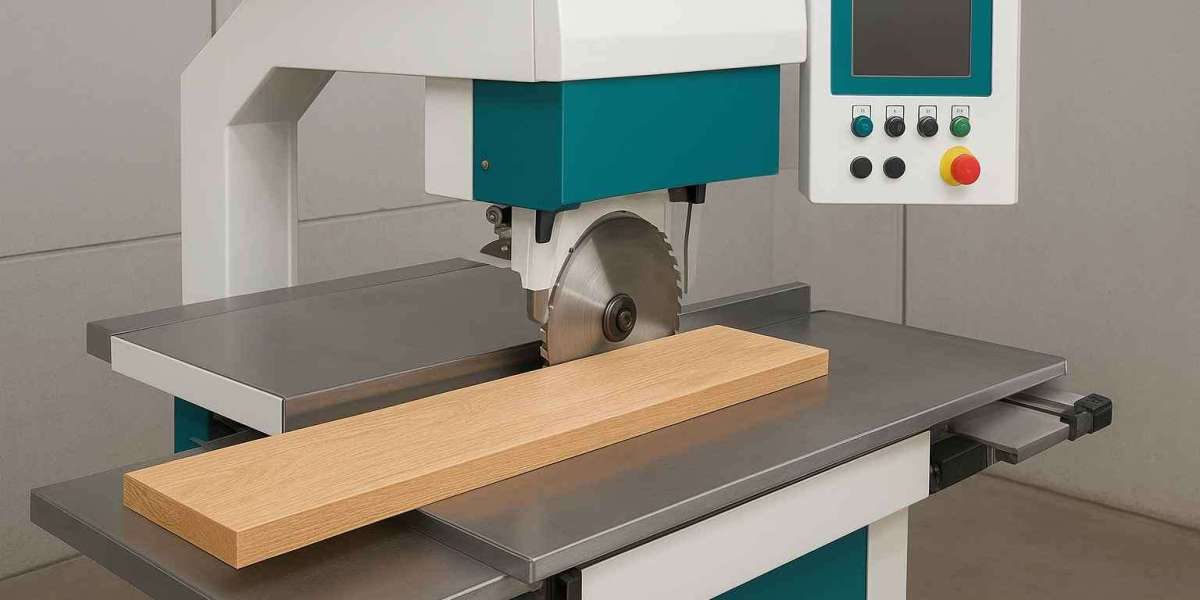In the competitive world of furniture manufacturing, efficiency is key to maintaining profitability and meeting customer demands. One technological advancement that has revolutionized this industry is the wood cutting machine. These machines are designed to streamline the cutting process, reduce waste, and enhance overall productivity. In this article, we will explore how wood cutting machines improve efficiency in furniture making, their key benefits, and why investing in the right equipment is essential for modern furniture workshops.
The Role of Wood Cutting Machines in Furniture Production
Furniture making traditionally relied on manual tools such as hand saws and chisels. While these methods can produce high-quality pieces, they are time-consuming and prone to human error. Enter the wood cutting machine—an automated solution capable of precise, consistent cuts with minimal effort.
Modern wood-cutting machines come in various types, including:
- CNC (Computer Numerical Control) machines: Allow for automated, precise cutting according to digital designs.
- Table saws: Efficient for straight cuts in large sheets of wood.
- Band saws: Ideal for curved cuts and intricate designs.
- Panel saws: Designed for cutting large panels accurately and efficiently.
By incorporating these machines into production lines, furniture manufacturers can dramatically reduce manual labor while maintaining high standards of quality.
Increased Productivity Through Automation
One of the most significant advantages of using a wood cutting machine is the increase in productivity. Unlike manual cutting, which requires significant time and skill, automated machines can execute repetitive tasks quickly and accurately. This not only speeds up the production process but also allows manufacturers to take on larger orders without increasing staff.
For instance, a CNC wood cutting machine can cut complex patterns with precision, completing in minutes what might take hours manually. Additionally, the ability to program multiple cuts in a single operation reduces downtime and increases the efficiency of workshops.
Precision and Consistency: Reducing Waste
Consistency is crucial in furniture making. A minor error in cutting can lead to wasted materials and additional costs. Wood cutting machines excel in precision, ensuring that each cut is identical to the design specifications. This precision reduces material wastage and minimizes the need for rework.
Key benefits of improved accuracy include:
- Optimal use of raw materials: Less wood is wasted during production.
- Uniformity in products: Enhances brand reputation and customer satisfaction.
- Reduced labor costs: Fewer manual corrections are required, allowing staff to focus on finishing and assembly.
Time-Saving Features That Streamline Workflow
Modern wood cutting machines are equipped with features that save time and simplify workflow. Some of these include:
- Automated feed systems: Allow continuous cutting without manual intervention.
- Integrated measuring tools: Ensure cuts are made to exact dimensions without extra setup.
- Programmable cutting patterns: Reduce the need for repeated manual adjustments.
These features not only improve efficiency but also allow craftsmen to focus on more creative and value-added aspects of furniture making.
Versatility for Different Furniture Designs
A well-equipped furniture workshop often needs to work with a variety of wood types and designs. Wood cutting machines offer the versatility to handle different sizes, shapes, and thicknesses of wood. From standard boards to intricate carvings, these machines adapt to the needs of any project, making them indispensable for both small-scale artisans and large manufacturers.
Benefits at a Glance
- Faster production times
- Higher precision and consistency
- Reduced material waste
- Lower labor costs
- Ability to handle complex designs
- Improved overall workflow
Safety and Ergonomics
Beyond efficiency, wood cutting machines improve workplace safety. Manual cutting tools pose risks of injury, especially during repetitive tasks. Automated machines reduce direct human contact with sharp blades, incorporating safety features such as emergency stops, blade guards, and automated feeding systems. This not only protects employees but also ensures compliance with industrial safety standards.
Choosing the Right Wood Cutting Machine
Selecting the right machine depends on factors such as production volume, wood types, and design complexity. High-volume manufacturers may benefit most from CNC or panel saws, while smaller workshops might find table saws and band saws sufficient. When choosing a machine, consider:
- Cutting capacity and precision
- Automation features and programmability
- Maintenance requirements
- Safety features
- Supplier reputation and after-sales support
Investing in the right wood cutting machine ensures long-term efficiency and a strong return on investment.
Conclusion
Incorporating a wood cutting machine into furniture production lines can transform a workshop by boosting productivity, reducing waste, and ensuring consistent quality. For businesses looking to stay competitive and meet growing demand, investing in modern wood cutting equipment is not optional—it’s essential.
If you are seeking high-quality industrial tools in the UAE, consult leading industrial tools suppliers in UAE to find machines that meet your production needs and elevate your furniture-making operations.



